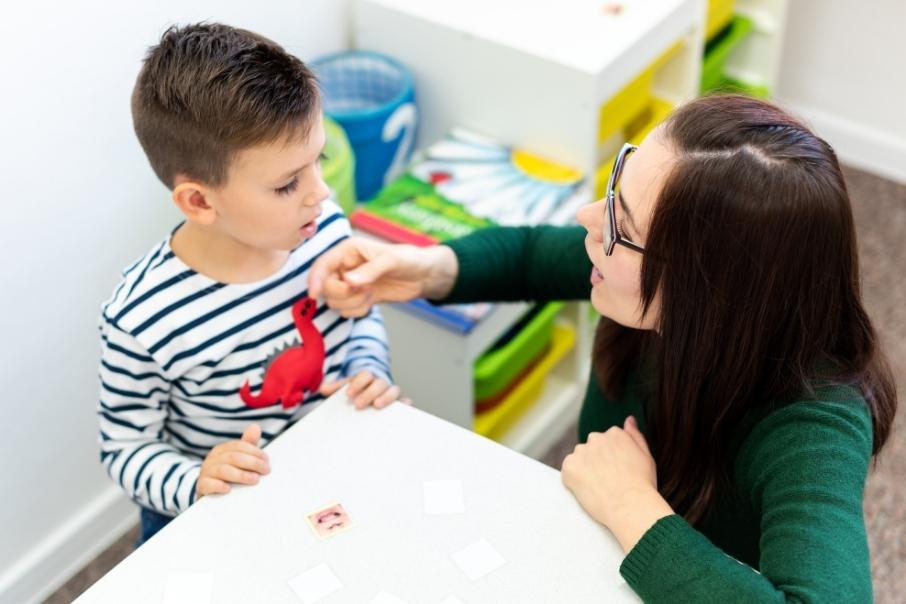
02 Aug Key Word Sign: A Simple Tool for Better Communication at Home
Key Word Sign: A Simple Tool for Better Communication at Home
In our busy, everyday lives, clear and effective communication with our children helps things run smoother! But trying to understand young children is often difficult and the misunderstandings can lead kids to feel frustrated. One helpful tool that families might not yet be familiar with is Key Word Sign. It can make a significant difference, not only for kids with hearing differences but for any family looking to enhance their communication skills. Let’s dive into what Key Word Sign is, who it can help, and why it’s worth trying at home.
What Is Key Word Sign?
Key Word Sign is a method that pairs simple hand signs with key words in spoken language. So in the sentence: “Time to go to school” you might use your hands to show the sign for “go” and “school” to help your child understand.
You’re probably now imagining the sign language you have seen on the TV during emergencies. This is Australian Sign Language (Auslan) which is a complete language with its own grammar and sentence structure that’s different to spoken English. (Fun fact that American, British and Australian sign languages are all different languages.) Key Word Sign is not Auslan however, because Key Word Sign focuses on using signs to represent just a few key words or concepts in a sentence. It still follows spoken English rules.
Why does it help? It’s very similar to how we adults use our hands to point or gesture while talking to help people understand what we’re saying – “The fish I caught was thisssss big”, “I left it over there.” These kinds of phrases are easier to understand if someone uses their hands to show us what they mean. The visual element is just an extra way our brain can get information to understand what we’re being told.
Key Word Sign is not a complete language or meant to replace speaking but a method to highlight key words to help our children understand us and tell us their needs. It’s especially helpful in the early years when speaking skills are still developing or when speaking might be challenging (think of those times your child is tired and irritable).
Who Can Benefit from Key Word Sign?
Key Word Sign isn’t just for children with hearing differences. It’s a easy and effective tool for lots of children and families:
– Young Children: For toddlers and preschoolers who are learning to talk, Key Word Sign can provide an additional way to express themselves and understand others.
– Children with Communication Challenges: Kids who might find it difficult to articulate their thoughts can use signs to help convey their needs and feelings.
– Multilingual Families: If your family speaks more than one language, Key Word Sign can provide consistency and clarity across different languages.
A common misconception is that sign language is only for children who are deaf or hard of hearing. In reality, Key Word Sign can be used with any child! It’s also not a replacement for spoken language. Instead, it complements it by providing visual cues that support understanding and communication. It’s not about choosing between signing or speaking—it’s about using both to enhance communication.
Top 3 Reasons to Try Key Word Sign at Home
- Improved Communication: Key Word Sign helps children and adults alike to convey their needs and understand each other more clearly. For instance, a child who is struggling to express their desire for a snack might use a sign for “eat” to get their message across.
- Reduced Frustration: When children have the tools to express themselves effectively, it can reduce frustration for everyone. If a child is upset and unable to verbalise why, signs can help them communicate their feelings or needs more quickly, easing tension and frustration.
- Enhanced Learning: Using Key Word Sign can boost a child’s overall language development. The combination of visual signs with spoken words reinforces learning and helps children grasp new concepts more effectively.
Practical Examples of Using Key Word Sign at Home
Here are a few practical ways to incorporate Key Word Sign into your daily routines:
- Meal Times: Use signs for common food items or meals. For example, you might use the sign for “milk” when offering a drink or “eat” when it’s time for a meal. This not only helps children learn the signs but also reinforces the connection between words and their meanings.
- Daily Routines: Incorporate signs for daily activities. When it’s time for bed, use the sign for “sleep” along with your bedtime routine. Similarly, use the sign for “bath” when preparing for a bath, helping children understand and anticipate these activities.
- Emotions and Needs: Teach signs for basic emotions like “happy,” “sad,” or “tired.” This can help children express how they feel more accurately. For example, if a child is feeling frustrated, they might use the sign for “sad” to help communicate their emotions.
Incorporating Key Word Sign into your home doesn’t mean a complete overhaul of your daily life. Instead, you can include a few simple signs into your existing routines. Give Key Word Sign a try in your home—it might just be the key to unlocking new ways for your family to connect and understand each other better.
To find out more about Key Word Sign you can go to Key Word Sign Australia for resources and more information- https://kwsa.org.au/
